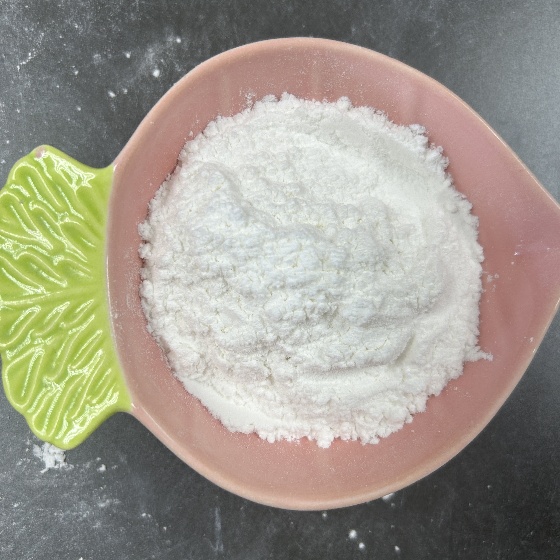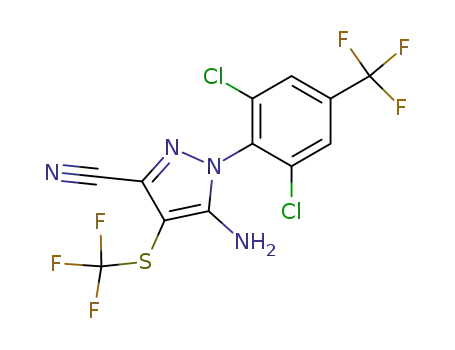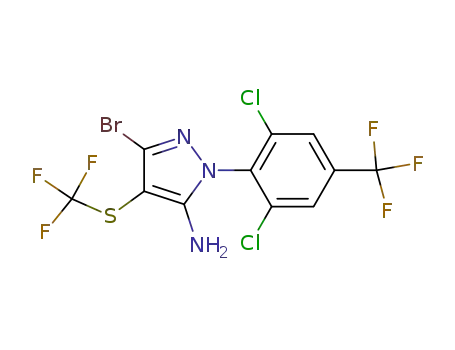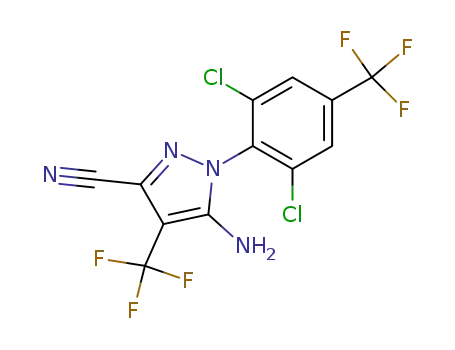Your Location:Home > Products > Chemical Reagents > Fipronil


CasNo: 120068-37-3
MF: C12H4Cl2F6N4OS
Appearance: clear colorless or slightly yellow liquid
Fipronil is a broad-spectrum insecticide. It has a strong killing effect on many pests and is often used in agriculture and public health to control pests. Fipronil works by interfering with the nervous system of insects. However, due to its potential harm to the environment and some non-target organisms, its use is strictly restricted and regulated. In agricultural production, improper use of fipronil may lead to problems such as excessive pesticide residues. Fipronil is usually produced through complex chemical synthesis processes, and the production process needs to follow strict environmental protection and safety standards.
InChI:InChI=1/C12H4Cl2F6N4OS/c13-5-1-4(11(15,16)17)2-6(14)8(5)24-10(22)9(7(3-21)23-24)26(25)12(18,19)20/h1-2H,22H2
In this review, we address the phenyl-pyrazole fipronil together with neonicotinoids because of similarities in their toxicity, physicochemical profiles, and presence in the environment. Neonicotinoids and fipronil currently account for approximately one third of the world insecticide market; the annual world production of the archetype neonicotinoid, imidacloprid, was estimated to be ca.
Neonicotinoids and fipronil are among the most widely used pesticides in the world. Their popularity is largely due to their high toxicity to invertebrates, the ease and flexibility with which they can be applied, their long persistence, and their systemic nature, which ensures that they spread to all parts of the target crop.

5-amino-1-(2,6-dichloro-4-(trifluoromethyl)phenyl)-4-(trifluoromethylthio)-1H-pyrazole-3-carbonitrile

5-amino-4-trifluoromethylsulfinyl-1-(2,6-dichloro-4-trifluoromethylphenyl)-3-thiocarbamoylpyrazole

sulfur dioxide

5-amino-3-bromo-1-(2,6-dichloro-4-trifluoromethylphenyl)-4-trifluoromethylthiopyrazole

MB 46513

5-amino-3-cyano-1-[2,6-dichloro-4-(trifluoromethyl)phenyl]-1H-pyrazole-4-sulfonic acid

fipronil amide

5-amino-1-(2,6-dichloro-4-(trifluoromethyl)phenyl)-4-(trifluoromethylthio)-1H-pyrazole-3-carbonitrile